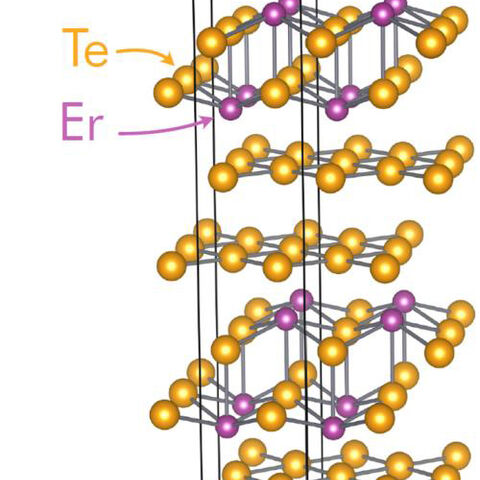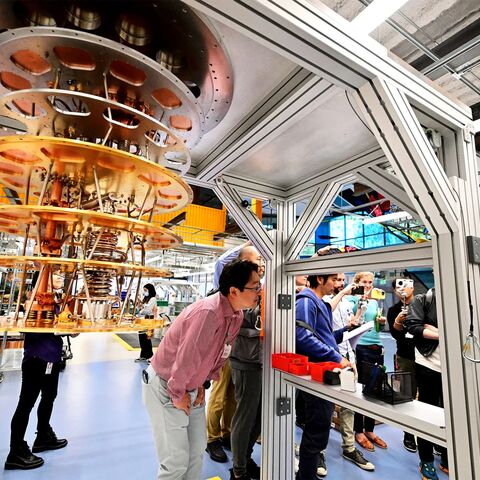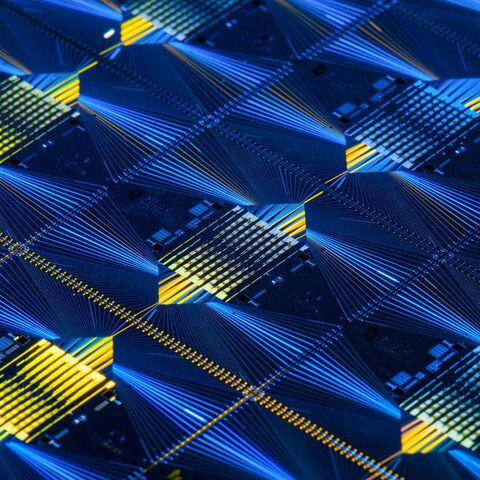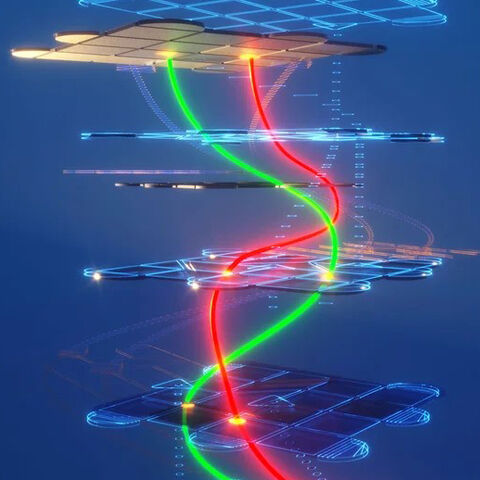News and Events
February 24, 2024
A phase of matter called Bragg glass, which prior to now had been purely theoretical, has been observed in a laboratory setting. Researchers, including physicist Krishnanand Mallayya of Cornell University, found this strange phase within an alloy containing palladium, terbium, and tellurium (PdxErTe3), as documented in a study published in Nature Physics.
February 9, 2024
Cornell quantum researchers have detected an elusive phase of matter, called the Bragg glass phase, using large volumes of x-ray data and a new machine learning data analysis tool. The discovery settles a long-standing question of whether this almost–but not quite–ordered state of Bragg glass can exist in real materials.
The paper, “Bragg glass signatures in PdxErTe3 with X-ray diffraction Temperature Clustering (X-TEC),” published in Nature Physics on Feb. 9. The lead author is Krishnanand Madhukar Mallayya, postdoctoral researcher in the Department of Physics in the College of Arts and Sciences (A&S). Eun-Ah Kim, professor of physics (A&S), is the corresponding author. The research was conducted in collaboration with scientists at Argonne National Laboratory and at Stanford University.
December 21, 2023
The world’s biggest computing companies and a raft of well-funded startups all agree: The future of computing is manipulating data with quantum mechanics. Over the past decade, governments, private companies, and venture capitalists have collectively invested billions of dollars into quantum computing, which aims to solve problems using a new type of logic enabled by harnessing quantum properties such as superposition and entanglement rather than ordinary 1’s and 0’s. Yet despite some prototypes capable of elementary operations, the hardware isn’t reliable enough to be practically useful.
December 20, 2023
Thanks to a paper in 1997 by the physicist Alexei Kitaev, then at Russia’s Landau Institute for Theoretical Physics, this strange electron choreography became the blueprint for a new kind of computer.
Traditional computers rely on transistors, switches that turn electricity off and on, encoding either a 0 or a 1—a “bit” of information. Connect these switches in the right way, and the machine can run any conceivable calculation, although exceptionally complex tasks could take billions of years.
...Recently, Google engineers brought the Majorana connection a step closer to reality with the help of Cornell University theorist Eun-Ah Kim.
October 3, 2023
Researchers in the Kim Group predict a way to achieve fractionalization without a magnetic field, a theory they detail in “Fractionalization in Fractional Correlated Insulating States at n ± 1/3 Filled Twisted Bilayer Graphene,” published in Physical Review Letters Sept. 8. Dan Mao, a Bethe/Wilkins/Kavli Institute at Cornell (KIC) postdoctoral fellow in the Laboratory of Atomic and Solid State Physics (LASSP), is lead author. Kim and doctoral student Kevin Zhang are co-authors.
August 3, 2023
Social phenomena occur when many individuals interact. Societies develop characters that depend on demographics, population density, and the environment. In the real Quantum Realm (as opposed to that of the Marvel movies), electrons form societies whose character depends on the interaction among constituents and the effect of their environment. The characteristics of electron communities manifest through material properties. While human activities can be easily surveilled, the fundamental laws of quantum mechanics, the uncertainty principle, forbids complete surveillance of electrons. In this talk, Kim discusses how we observe and simulate the fundamentally mystical life of electrons to understand and predict the characters of various electron societies in the real quantum realm. Kim also talks about how AI tools can help in this challenging endeavor.
May 23, 2023
In a breakthrough for topological quantum computation, Google Quantum AI successfully observed the behavior of non-Abelion anyons for the first time ever. Despite being completely identical, when these particles are made to swap places, they retain a "memory" that makes it possible to tell that they've been swapped. And now this "memory" (along with other, even stranger behaviors) have been observed in a series of experiments. Eun-Ah Kim and former postdoc Yuri Lensky developed the protocol that allowed the team at Google Quantum AI to braid and manipulate the non-Abelian anyons.
May 12, 2023
Eun-Ah Kim, professor of physics in the College of Arts and Sciences, and Google researchers report the first demonstration of two-dimensional particles, called non-Abelian anyons, that are the key ingredient for realizing topological quantum computing, a promising method of introducing fault resistance to quantum computing.
May 9, 2023
Similar efforts to turn electrons into non-abelian anyons have also stalled. Bob Willett of Nokia Bell Labs has probably come the closest in his attempts to corral electrons in gallium arsenide, where promising but subtle signs of braiding exist. The data is messy, however, and the ultracold temperature, ultrapure materials, and ultrastrong magnetic fields make the experiment tough to reproduce.
“There has been a long history of not observing anything,” said Eun-Ah Kim of Cornell University.
Wrangling electrons, however, is not the only way to make non-abelian quasiparticles.
“I had given up on all of this,” said Kim, who spent years coming up with ways to detect anyons as a graduate student and now collaborates with Google. “Then came the quantum simulators.”
April 13, 2023
Some classical computers have error correction built into their memories based on bits; quantum computers, to be workable in the future, will need error correction mechanisms, too, based on the vastly more sensitive qubits.
Cornell Professor Eun-Ah Kim and former Bethe/KIC/Wikins postdoctoral fellow Yuri Lensky (now at Google) have recently taken a step toward fault-tolerant quantum computing: they constructed a simple model containing exotic particles called non-Abelian anyons, compact and practical enough to run on modern quantum hardware. Realizing these particles, which can only exist in two dimensions, is a move towards implementing it in the real world.







